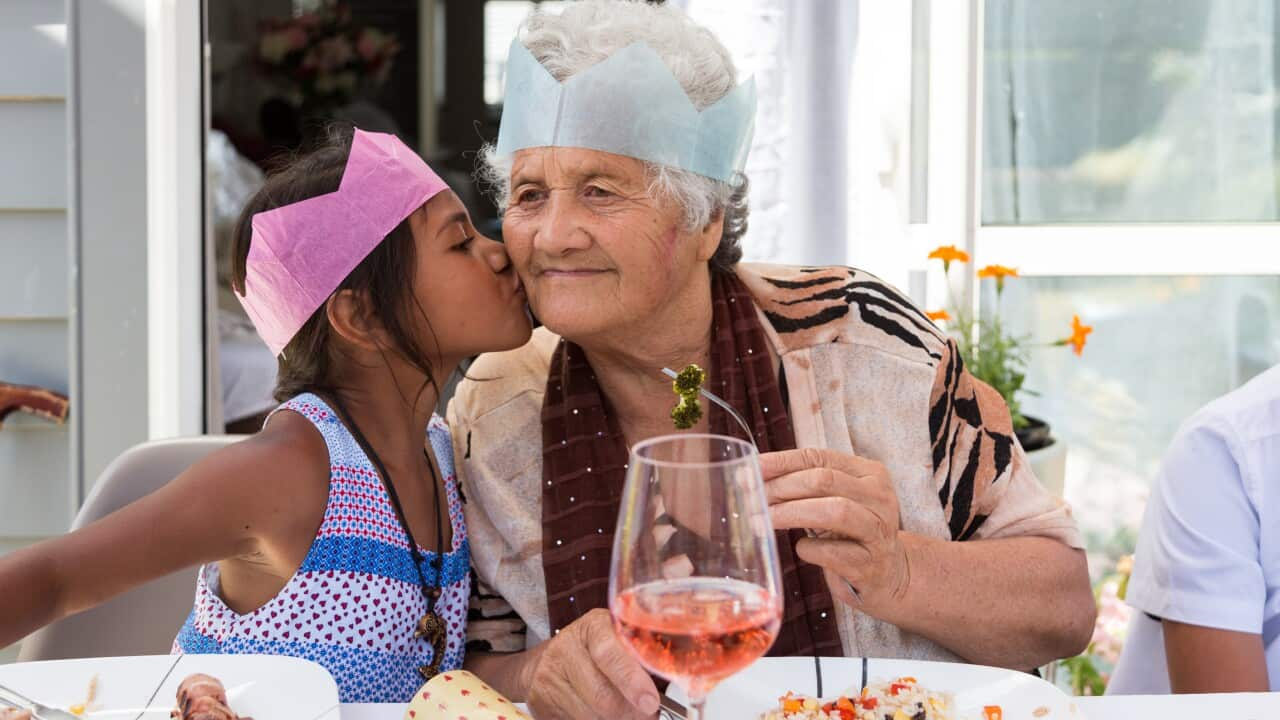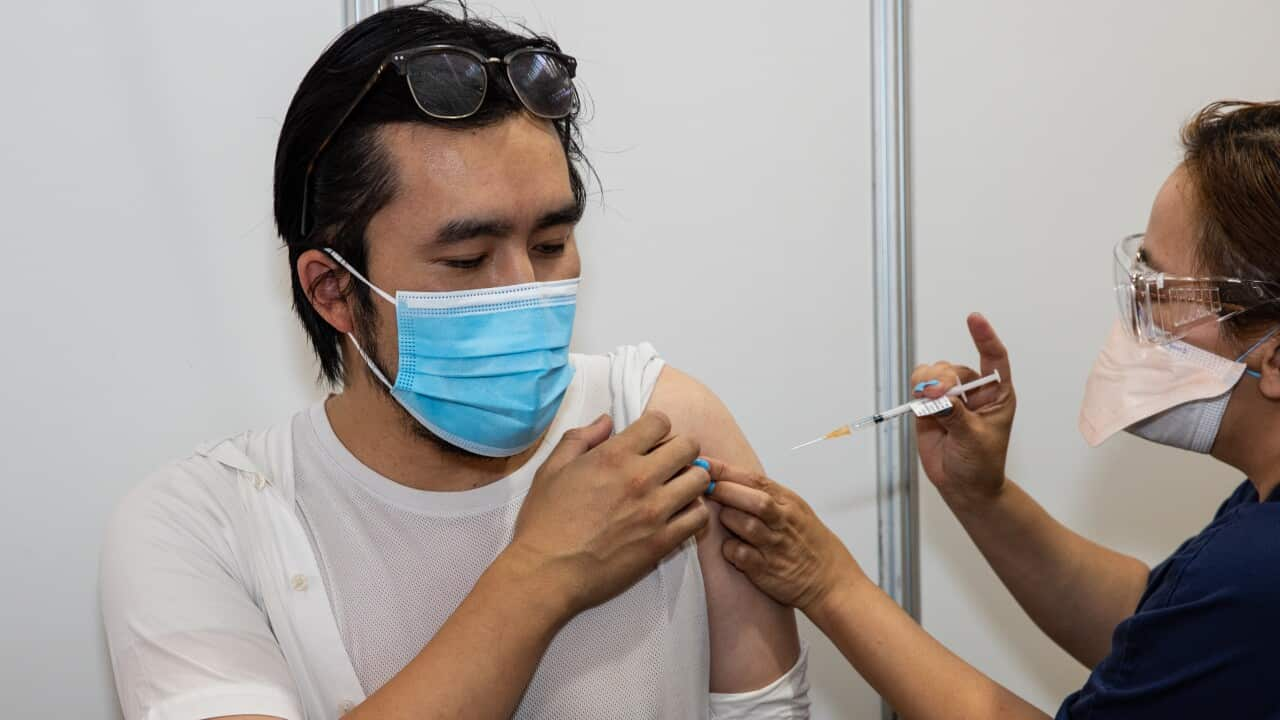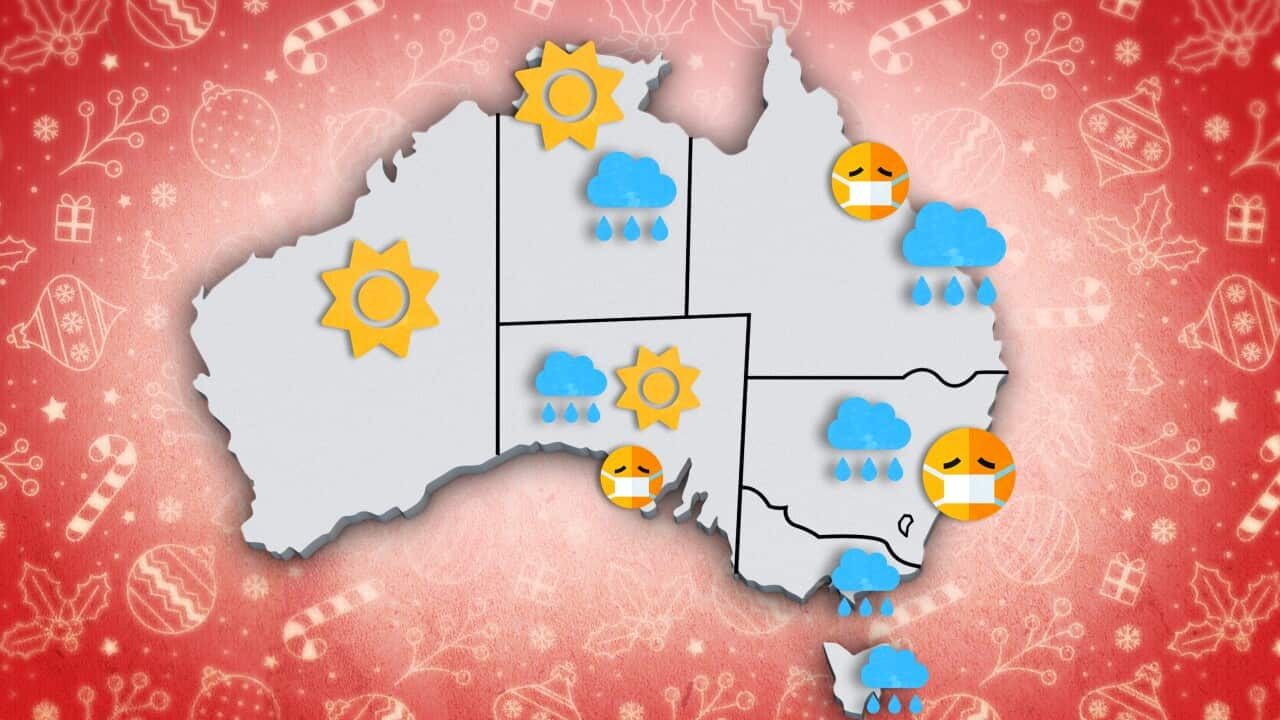COVID-19 cases are on the rise again in Australia and health experts say now is the time for people to get vaccinated if they want to protect themselves in time for Christmas and holiday travel.
The latest COVID-19 wave shows no sign of ending, with figures from last week showing a rise in cases in each state. In NSW and Victoria, case numbers jumped 20 per cent compared with figures from the previous week.
While cases are still expected to peak before Christmas, experts say Australians who need to get vaccinated should do it now as it takes one to two weeks for the jab to take effect.
"That's why it's important to not put it off," infectious diseases physician Professor Peter Collignon said.
Nationally, more than 72 per cent of Australians aged over 16 have now had a third COVID-19 vaccine dose (first booster), but only 43 per cent of those aged over 30 have had a fourth dose (second booster).

Around 72 per cent of Australians aged over 16 have had a COVID booster. Source: SBS News
Professor Collignon, of Canberra Hospital and the Australian National University, said the vaccines are only about 30 per cent effective at stopping infection, although they do markedly decrease someone's risk of death and serious disease.
All Australians aged over 16 years old are being advised to get a third vaccine dose.
A fourth dose is recommended for those aged over 50. Those aged between 30 and 49 years old can get a fourth dose if they want to.
Those who are immunocompromised can get a fifth dose.
Professor Collignon said everyone over 30 likely needed at least three vaccine doses to get long-lasting immunity. But he said about 80-90 per cent of young Australians had also been infected with COVID-19 and this provided an extra boost to their immune system.
"Therefore we've got to be careful about not overdoing it," he said.
"My own view is that if you're an 80-year-old and you haven't had your fourth dose, get it, but if you're a 30-year-old or 40-year-old you can probably wait ... because our next big risk will probably be in winter next year."
Professor Collignon said research showed leaving a longer time between vaccine doses resulted in longer and better protection. He recommended young people leave six months between their second and third dose.
A UK Health Security Agency report released on 1 December showed COVID-19 vaccines were 85 per cent effective against deaths from Omicron two to four weeks after a third dose, and 68 per cent effective after six months.
How to stop COVID-19 from invading your Christmas table
Professor Collignon said if people were having family over on Christmas Day, organising a barbecue outside was probably the safest bet.
"Because that markedly decreases your risk much more than vaccination, or wearing a mask will do," he said.
"If you're vulnerable, masks still give you some protection ... think about wearing eye protection.
"But mainly be outside as much as you can and avoid crowded indoor situations as much as is practicable."

Families are advised to have their Christmas meals outside where possible. Source: Getty / Jessie Casson
Professor Collignon said another obvious measure was for people to stay away from their families if they were sick, and not to go into work.
"If you know somebody's sick, keep away from them," he said.
Clinical epidemiologist Professor Nancy Baxter of the University of Melbourne said wearing a mask in the week leading up to Christmas Day, and doing Rapid Antigen Tests (RATs) for the three days before would also reduce the risk.

People queue at a mass COVID-19 vaccination hub in Sydney last year. Source: AAP / Joel Carrett
"I want to be able to get on that plane COVID free, I want to be able to see my 92-year-old mother and not infect her with COVID," she said.
Health authorities have been reluctant to impose tough measures despite the increase in cases so Professor Baxter said it was up to individuals to protect themselves.
"I think individual families are going to have to think about the risk to people who are at their Christmas table," she said "[and] to try and minimise the risk that COVID comes to that Christmas table".
COVID-19 cases on the rise
Last week, 37,796 people in NSW were diagnosed with the virus, 6,000 more than last week (an increase of almost 20 per cent), while Victoria's weekly total of almost 27,000 was 5000 up on the previous seven days.
Weekly case figures increased in every jurisdiction, more than doubling in the Northern Territory and rising from 2,712 to 3,957 in Tasmania.
But these case numbers are likely to be an underestimation due to COVID-19 infections now being self-reported.
The number of people in hospital has risen by a smaller percentage. Around 1,481 people were in hospital in NSW (up 161 compared to the week before) and 38 in intensive care (up six). In Victoria, 550 people were in hospital (up 120) and 21 in intensive care (up six).
There were 32 deaths in NSW (up seven) and 54 deaths in Victoria (down 14).

A woman has her temperature checked before entering the Sydney Fish Market in 2020. Source: AAP / Bianca De Marchi
These sub-variants include the XBF recombinant strain (a combination of BA.2.75 and BA.5) and existing sub-variants BQ.1/BQ.1.1 and BA 2.75, along with the XBB recombinant.
Associate Professor James Wood from the School of Population Health at the University of New South Wales, believes the current COVID-19 wave will be short and sharp, similar to a wave Singapore experienced recently.
"I still think we’re peaking before Christmas," he said. "[It's still] a bit uncertain but I wouldn’t be at all surprised if we’re at the peak right now".
States re-introduce measures
The latest wave has seen authorities in many states re-introduce recommendations for mask-wearing.
NSW has upgraded its COVID-19 risk rating to amber, which means people are required to wear masks in all hospital areas. Visitor numbers will also be monitored to protect staff and patients.
Authorities are also urging people to wear a mask when indoors or in crowded places, as it gives vulnerable people nearby an extra layer of protection.
Anyone who tests positive for COVID-19 or has any cold or flu symptoms is advised to stay home and to wear a mask in high-risk settings.
Queensland is also on amber alert, which requires people to wear a mask in healthcare settings, as well as indoors if people cannot socially distance and on public transport.
Face masks in indoor settings are recommended but not mandatory in Northern Territory, Tasmania and Victoria, and are required in healthcare settings in South Australia and some healthcare settings in Western Australia.
Isolation requirements have been dropped in all states.
- Additional reporting by AAP












